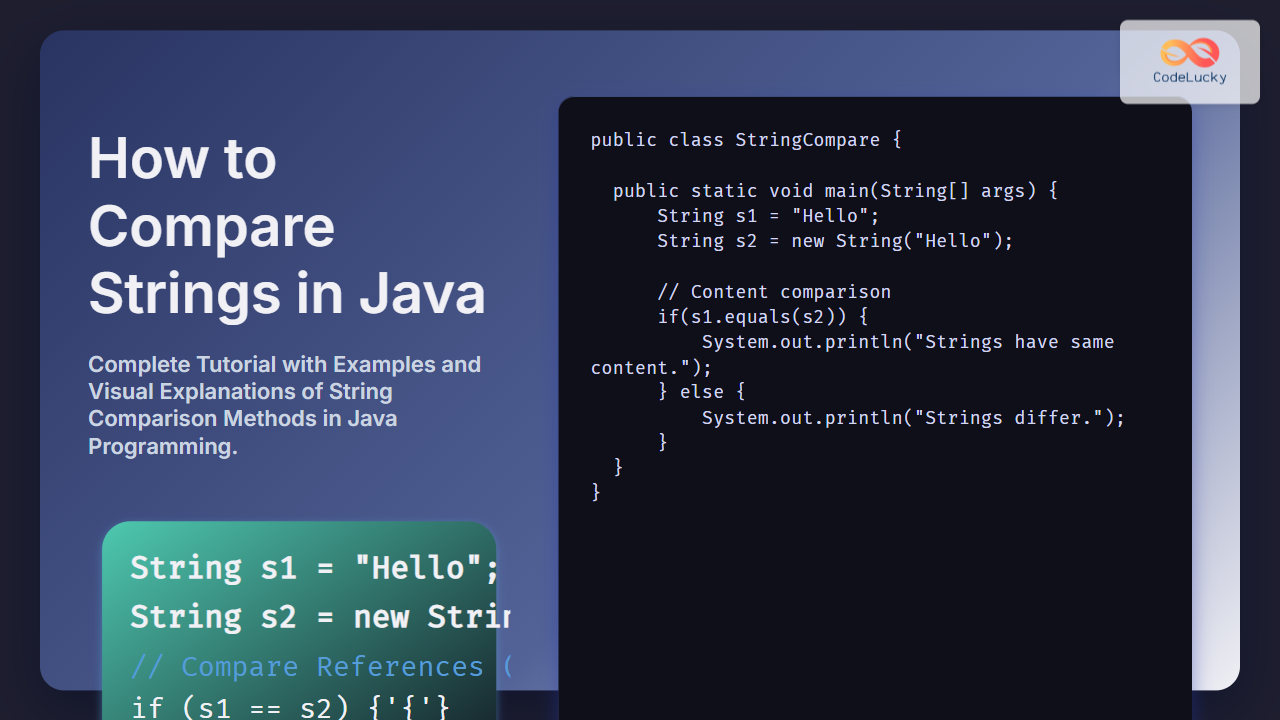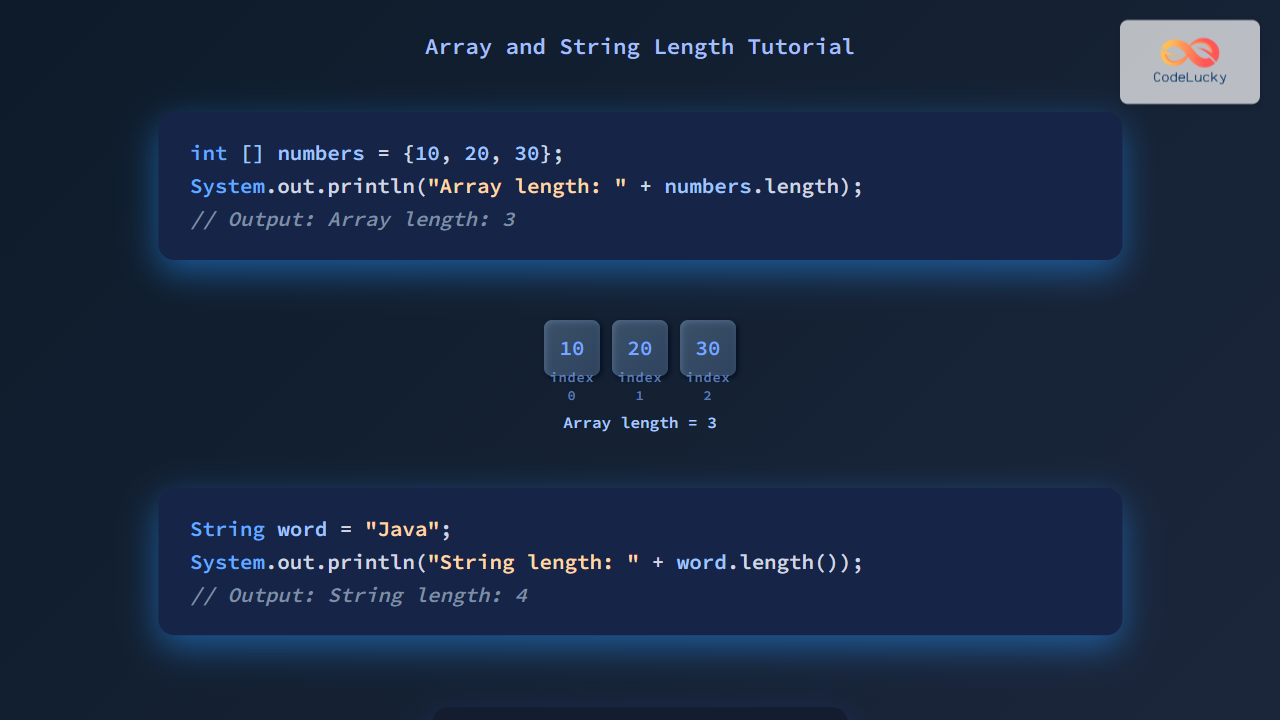Java's ArrayList is a powerful and flexible data structure that provides dynamic array functionality. It's part of the Java Collections Framework and offers an array-like interface with the added benefit of automatic resizing. In this comprehensive guide, we'll dive deep into ArrayList, exploring its features, methods, and best practices.
What is ArrayList?
ArrayList is a resizable array implementation of the List interface. Unlike traditional arrays, ArrayList can grow or shrink dynamically as elements are added or removed. This makes it an ideal choice when you need a collection that can change size during runtime.
🔑 Key Features:
- Dynamic sizing
- Fast random access
- Implements List interface
- Allows duplicate elements
- Maintains insertion order
Creating an ArrayList
Let's start by looking at different ways to create an ArrayList:
// Empty ArrayList
ArrayList<String> fruits = new ArrayList<>();
// ArrayList with initial capacity
ArrayList<Integer> numbers = new ArrayList<>(20);
// ArrayList from another collection
List<String> vegetables = Arrays.asList("Carrot", "Broccoli", "Spinach");
ArrayList<String> veggieList = new ArrayList<>(vegetables);
In the examples above, we've created ArrayLists of different types (String and Integer) and with different initialization methods.
Adding Elements to ArrayList
Adding elements to an ArrayList is straightforward:
ArrayList<String> colors = new ArrayList<>();
// Add elements to the end of the list
colors.add("Red");
colors.add("Blue");
colors.add("Green");
// Add an element at a specific index
colors.add(1, "Yellow");
System.out.println(colors); // Output: [Red, Yellow, Blue, Green]
🔍 Note: When you add an element at a specific index, the existing elements are shifted to make room for the new element.
Accessing Elements in ArrayList
You can access elements in an ArrayList using the get() method:
ArrayList<String> fruits = new ArrayList<>();
fruits.add("Apple");
fruits.add("Banana");
fruits.add("Cherry");
String secondFruit = fruits.get(1);
System.out.println("Second fruit: " + secondFruit); // Output: Second fruit: Banana
// Iterating through the ArrayList
for (String fruit : fruits) {
System.out.println(fruit);
}
Updating Elements in ArrayList
To update an element, use the set() method:
ArrayList<Integer> scores = new ArrayList<>();
scores.add(85);
scores.add(90);
scores.add(78);
scores.set(2, 82); // Update the third element
System.out.println(scores); // Output: [85, 90, 82]
Removing Elements from ArrayList
ArrayList provides several methods to remove elements:
ArrayList<String> animals = new ArrayList<>();
animals.add("Lion");
animals.add("Tiger");
animals.add("Bear");
animals.add("Elephant");
// Remove by index
animals.remove(1);
// Remove by object
animals.remove("Bear");
// Remove all elements that satisfy a condition
animals.removeIf(animal -> animal.startsWith("E"));
System.out.println(animals); // Output: [Lion]
🚀 Pro Tip: The removeIf() method is particularly useful for removing multiple elements based on a condition.
Searching in ArrayList
ArrayList provides methods to search for elements:
ArrayList<String> fruits = new ArrayList<>();
fruits.add("Apple");
fruits.add("Banana");
fruits.add("Cherry");
fruits.add("Date");
// Check if an element exists
boolean hasBanana = fruits.contains("Banana");
System.out.println("Has Banana: " + hasBanana); // Output: Has Banana: true
// Find the index of an element
int cherryIndex = fruits.indexOf("Cherry");
System.out.println("Index of Cherry: " + cherryIndex); // Output: Index of Cherry: 2
// Find the last occurrence of an element
fruits.add("Apple");
int lastAppleIndex = fruits.lastIndexOf("Apple");
System.out.println("Last index of Apple: " + lastAppleIndex); // Output: Last index of Apple: 4
ArrayList Size and Capacity
ArrayList manages its size and capacity automatically:
ArrayList<Double> prices = new ArrayList<>();
prices.add(19.99);
prices.add(29.99);
prices.add(39.99);
// Get the size of the ArrayList
int size = prices.size();
System.out.println("Size: " + size); // Output: Size: 3
// Check if the ArrayList is empty
boolean isEmpty = prices.isEmpty();
System.out.println("Is empty: " + isEmpty); // Output: Is empty: false
// Trim the capacity to the current size
prices.trimToSize();
🔧 Note: The trimToSize() method is useful for optimizing memory usage when you know you won't be adding more elements.
ArrayList and Generics
ArrayList uses generics to ensure type safety:
// ArrayList of Integers
ArrayList<Integer> numbers = new ArrayList<>();
numbers.add(1);
numbers.add(2);
numbers.add(3);
// ArrayList of custom objects
class Person {
String name;
int age;
Person(String name, int age) {
this.name = name;
this.age = age;
}
@Override
public String toString() {
return name + " (" + age + ")";
}
}
ArrayList<Person> people = new ArrayList<>();
people.add(new Person("Alice", 30));
people.add(new Person("Bob", 25));
System.out.println(people); // Output: [Alice (30), Bob (25)]
Using generics ensures that you can only add elements of the specified type to the ArrayList, preventing runtime errors.
ArrayList Performance Considerations
While ArrayList is versatile, it's important to understand its performance characteristics:
- Adding/removing at the end: O(1) amortized time
- Adding/removing from the middle: O(n) time
- Random access: O(1) time
- Searching: O(n) time for unsorted list
🏎️ Performance Tip: If you know the approximate number of elements you'll be adding, initialize the ArrayList with that capacity to reduce the number of resizing operations:
ArrayList<String> largeList = new ArrayList<>(10000);
ArrayList vs. LinkedList
ArrayList and LinkedList are both List implementations, but they have different strengths:
| Operation | ArrayList | LinkedList |
|---|---|---|
| Random access | O(1) | O(n) |
| Insert/delete at beginning | O(n) | O(1) |
| Insert/delete at end | O(1) amortized | O(1) |
| Insert/delete in middle | O(n) | O(1) |
| Memory overhead | Low | Higher |
Choose ArrayList when you need fast random access and don't frequently insert or delete elements from the beginning or middle of the list.
Advanced ArrayList Operations
Let's explore some more advanced operations with ArrayList:
Sorting an ArrayList
You can sort an ArrayList using the Collections.sort() method:
ArrayList<Integer> numbers = new ArrayList<>();
numbers.add(5);
numbers.add(2);
numbers.add(8);
numbers.add(1);
Collections.sort(numbers);
System.out.println("Sorted numbers: " + numbers); // Output: Sorted numbers: [1, 2, 5, 8]
// Custom sorting with Comparator
ArrayList<Person> people = new ArrayList<>();
people.add(new Person("Alice", 30));
people.add(new Person("Bob", 25));
people.add(new Person("Charlie", 35));
Collections.sort(people, (p1, p2) -> p1.age - p2.age);
System.out.println("Sorted by age: " + people); // Output: Sorted by age: [Bob (25), Alice (30), Charlie (35)]
Converting ArrayList to Array
You can convert an ArrayList to an array:
ArrayList<String> fruits = new ArrayList<>();
fruits.add("Apple");
fruits.add("Banana");
fruits.add("Cherry");
// Convert to Object array
Object[] fruitArray = fruits.toArray();
// Convert to String array
String[] fruitStringArray = fruits.toArray(new String[0]);
System.out.println(Arrays.toString(fruitStringArray)); // Output: [Apple, Banana, Cherry]
Sublist Operations
ArrayList allows you to work with a portion of the list:
ArrayList<Integer> numbers = new ArrayList<>();
for (int i = 0; i < 10; i++) {
numbers.add(i);
}
// Get a sublist
List<Integer> subList = numbers.subList(3, 7);
System.out.println("Sublist: " + subList); // Output: Sublist: [3, 4, 5, 6]
// Modify the sublist (affects the original list)
subList.set(1, 99);
System.out.println("Modified numbers: " + numbers); // Output: Modified numbers: [0, 1, 2, 3, 99, 5, 6, 7, 8, 9]
// Clear a portion of the list using subList
numbers.subList(2, 5).clear();
System.out.println("After clearing sublist: " + numbers); // Output: After clearing sublist: [0, 1, 5, 6, 7, 8, 9]
Thread Safety and Synchronization
ArrayList is not thread-safe. If you need to use an ArrayList in a multi-threaded environment, you have two options:
- Use
Collections.synchronizedList()to create a synchronized wrapper:
List<String> syncList = Collections.synchronizedList(new ArrayList<>());
- Use
CopyOnWriteArrayListfor a thread-safe variant with different performance characteristics:
CopyOnWriteArrayList<String> threadSafeList = new CopyOnWriteArrayList<>();
🔒 Note: Synchronization comes with a performance cost, so only use these options when necessary in multi-threaded scenarios.
Best Practices for Using ArrayList
To make the most of ArrayList, consider these best practices:
-
Choose the right initial capacity: If you know the approximate number of elements, initialize the ArrayList with that capacity to reduce resizing operations.
-
Use the diamond operator: When creating an ArrayList, use the diamond operator (
<>) for cleaner code:
ArrayList<String> list = new ArrayList<>(); // Instead of ArrayList<String> list = new ArrayList<String>();
- Prefer foreach loop for iteration: When you don't need the index, use the foreach loop for cleaner, more readable code:
for (String item : list) {
System.out.println(item);
}
-
Use generics: Always specify the type parameter to ensure type safety and avoid runtime errors.
-
Consider using List interface: Declare your ArrayList as a List for better flexibility:
List<String> list = new ArrayList<>();
-
Use removeIf() for conditional removal: When removing elements based on a condition, prefer
removeIf()over manual iteration and removal. -
Be cautious with large ArrayLists: For very large lists, consider using alternative data structures or database solutions.
Conclusion
ArrayList is a versatile and powerful data structure in Java that provides dynamic array functionality. Its ability to resize automatically, coupled with fast random access and a rich set of methods, makes it suitable for a wide range of applications. By understanding its strengths, limitations, and best practices, you can effectively leverage ArrayList in your Java programs to write more efficient and maintainable code.
Remember that while ArrayList is excellent for many scenarios, it's essential to consider your specific use case. For situations requiring frequent insertions or deletions at the beginning or middle of the list, you might want to consider alternatives like LinkedList. Always choose the right tool for the job to ensure optimal performance and maintainability in your Java applications.
- What is ArrayList?
- Creating an ArrayList
- Adding Elements to ArrayList
- Accessing Elements in ArrayList
- Updating Elements in ArrayList
- Removing Elements from ArrayList
- Searching in ArrayList
- ArrayList Size and Capacity
- ArrayList and Generics
- ArrayList Performance Considerations
- ArrayList vs. LinkedList
- Advanced ArrayList Operations
- Thread Safety and Synchronization
- Best Practices for Using ArrayList
- Conclusion



















